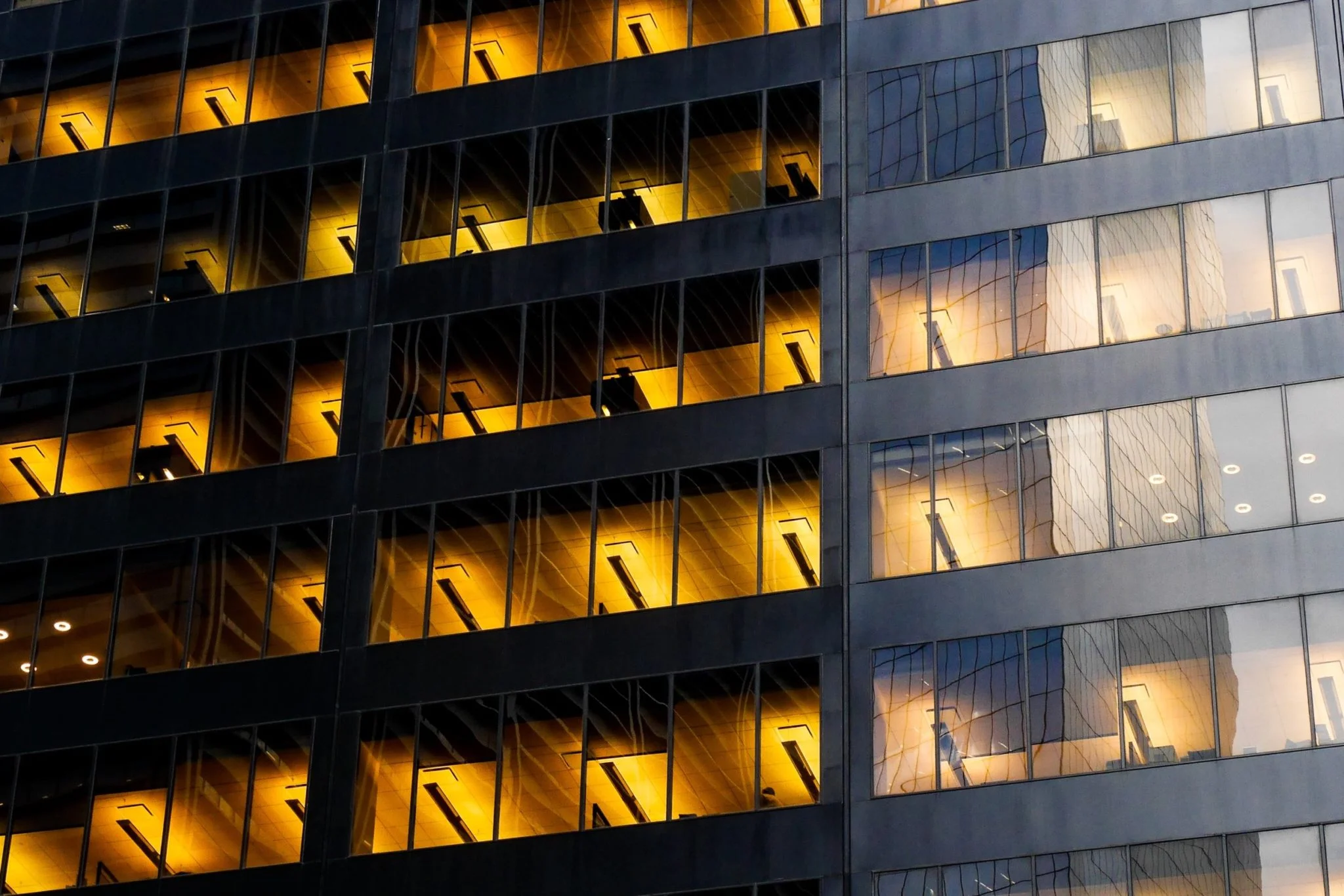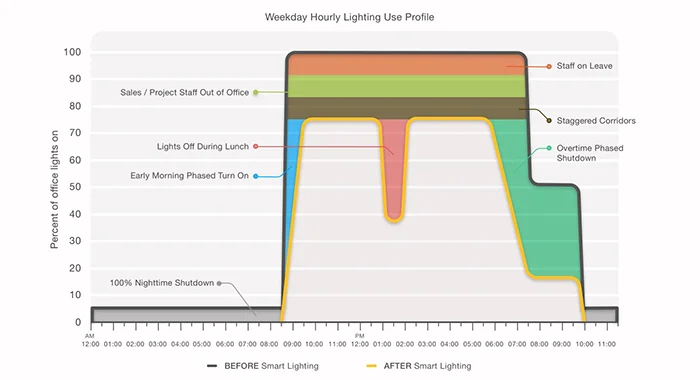Wireless Lighting Control
Why Conventional Zonal Lighting Controls Don’t Save Energy

Many offices are turning to lighting control systems to reduce their energy costs and carbon footprint. Unfortunately, many of them opt for outdated zonal control timers. Conventional zonal lighting control has many limitations, but the most important concern is the inability to actually reduce lighting energy use.
This paper discusses these flaws and helps you to rethink your assumptions about zonal lighting control. First, we shall look at two defining features of conventional lighting control, online vs. offline and zonal size.
Offline versus Online
Zonal control systems are typically offline – they run on simple 7-day schedule cycles and need to be calibrated manually. Moreover, any change to the zoning layout requires physical rewiring of your lights. This offline work is inefficient, expensive, and error-prone.
One customer who had used a zonal lighting timer found out the hard way that their timer didn’t know when it was a holiday. Their lights were being turned on all day long during public holidays when the office was empty.
Online systems can automatically detect public holidays and activate special schedules. Moreover, they can be quickly and easily edited on any web-enabled device, so your schedules can adjust and adapt over time to meet your needs. If you have fixture-level control, you can even rezone your entire office via any web browser, without any professional help.
Zonal size matters
The size of your unit of lighting control significantly affects how the system works and saves energy. If the entire office is controlled together, then just one person out of 100 working overtime means all the lights must be on. Typical zonal control systems group 30-50 light fixtures together in a zone with around 25 workstations. All 25 of those occupants must leave before a single light in that zone can turn off.
With individual fixture control, however, you can turn lights on or off one by one. So, if one occupant is on leave, you can turn off the light above their desk for the whole day. And if one occupant works late, you can turn off all lights except for theirs. This level of precision and efficiency enables significantly higher savings.

Does conventional zonal lighting control save energy?
Let’s look at how office lights operate during a typical workday in a modern office. Here are 7 areas where conventional zonal control waste energy. We compare the difference with using En-trak Smart Lighting.
And this is a snapshot of energy consumption before and after smart lighting is installed in the office.
How does Smart Lighting avoid these problems?
We focus on five core areas to ensure that our lighting control system is the best in the market for modern offices:
1. Individual fixture control
Whether controlled by sensors, schedule or switch, the smaller the unit of control, the higher the savings. En-trak is the only cost-effective solution that allows individual fixture control to deliver savings that are impossible to achieve with zonal control.
2. Universal application with any existing lightings
En-trak Smart Lighting is easy to manage, understand, and install. It can be applied to all areas of your office to help your entire office save energy. What’s more, En-trak Smart Lighting can be used on any of your existing lighting. It is perfect for any retrofit projects.
3. Quick & easy installation
Zonal control can be expensive to install, with wiring for different zoning layouts which must be fixed before installation. En-trak Smart Lighting is very simple to install–on average 6 minutes per controller. Configuration is easy and admin users can re-zone their office lightings, anytime, anywhere, without any costly rewiring.
4. Flexible configuration
Your office usage may change over time. To maintain savings, your lighting control system needs to change with it. Costs can skyrocket if that change requires engineering work or expert configuration. That’s why we make sure 100% of configuration, from schedules to zoning to staff assignments, can be done through an intuitive web portal.
5. Optimum payback
You deserve to get the most out of your energy saving investments. We work hard to ensure that your savings will be significant enough to deliver a strong return on your lighting control investment. By focusing on what drives savings, En-trak Smart Lighting provides the best office lighting control system in the market.